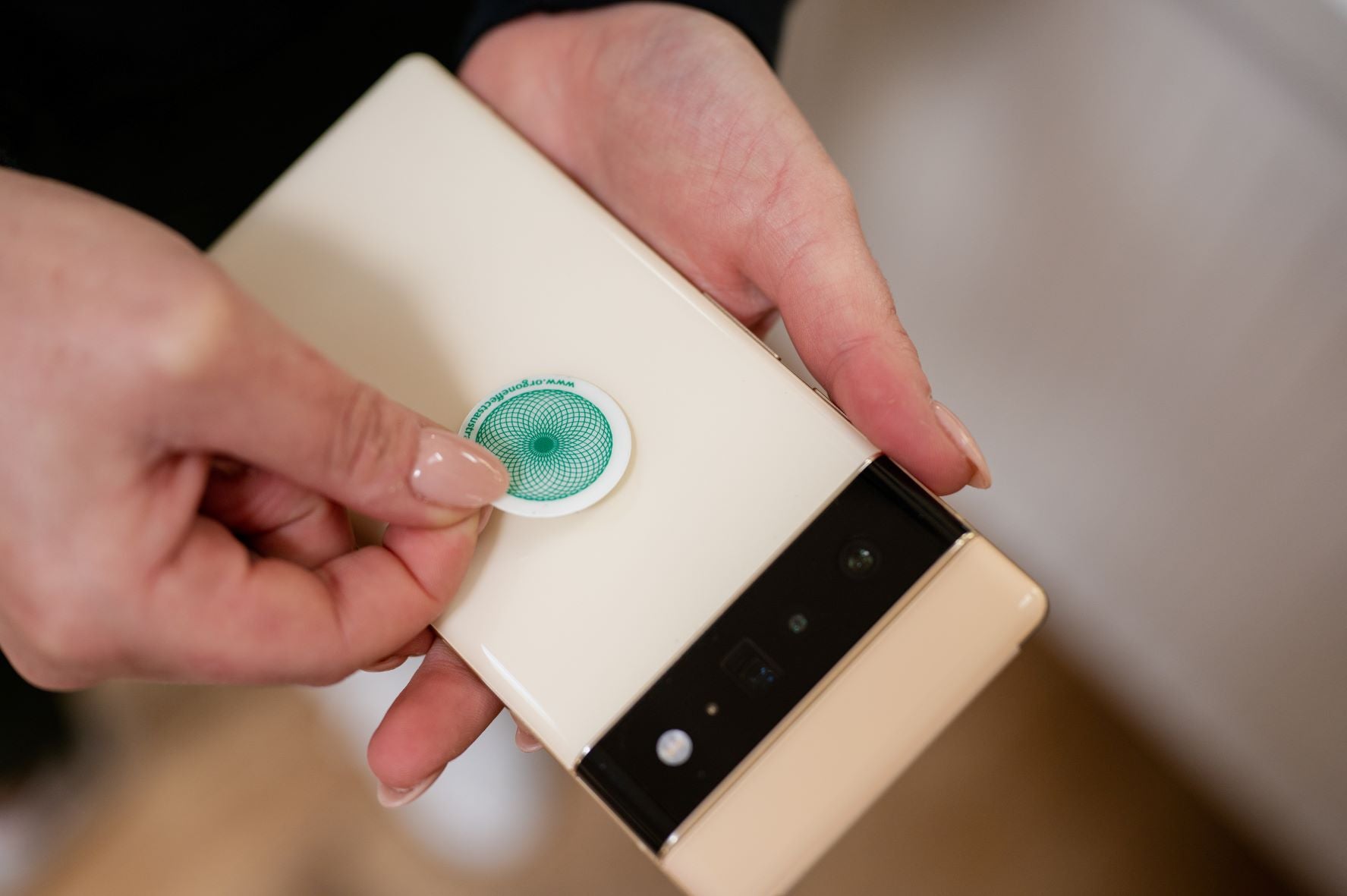5G Cellular Network
Since the advent of the cellular network 5G has gained prominence in the media world, many of us have become so curious to know about it and how it is different from the previous ones (2G, 3G, and 4G). But it may interest you to know that 5G cellular network is far more advanced than the previous mobile networks.
5G network works by converting analog signals into digital signals. The analog signals represent sounds and images which are converted by an analog-to-digital converter and further digitized in the cell phones in the form of a sequence of numbers. This sequence of numbers is then transmitted as a stream of bits called “digital signals.”
The areas where the 5G networks covered are divided into small geographical areas. These small areas are called “cells.” We will talk more on cells later.

How is 5G Different from Previous Cellular Networks?
Following 2G for the GSM system, 3G for UMTS, and 4G for LTE, 5G is known as the fifth generation, which is the latest generation of mobile communications. 5G is designed to have high performance, high data rate, to save energy, reduce cost and improve the system capacity and connectivity.
Response Time and Data Rate of 5G
If you are wondering what the fuss is about 5G, there you go. 5G network possesses much higher data rates up to 10Gbps, which is 100 times faster than the 4G LTE. Apart from this, 5G has lower network latency which is below one millisecond. This means that 5G has a faster response time, faster than 4G which is around 30 – 70 milliseconds. You can imagine the difference!
Although the data rate provided by the previous cellular networks are low, they are still suitable for mobile phones. However, they are too small to serve home and office computers because their cell towers could not provide economic internet bandwidth that is large enough to help home and office computers.
Being designed with faster response time and higher bandwidth, 5G networks can serve not only cell phones but also home and office desktops.
Frequency of 5G Cellular Network
While previous cellular networks such as 4G use frequencies that are in the microwave class band between 700 MHz and 3 GHz, 5G networks use higher frequency radio waves that are in the millimeter wave band of between 28 GHz and 39 GHz. These higher frequencies are what give the latter higher data rates.
When compared to 4G LTE that uses 20 MHz frequency channels to communicate with the wireless device, 5G networks use up to 400 MHz which is capable of transmitting more data (bits per second). This transmission is enabled by the use of Orthogonal Frequency Division Multiplexing (OFDM) which allows multiple carrier waves to be transmitted in the frequency channel.
In a simple explanation, OFDM allows multiple bits of information to be transferred in parallel and simultaneously. Now, you can see what it feels like to use a 5G network. The standards that are set for this 5G are very high. You will see them in the next section.
Technical Standards for 5G Cellular Network
These standards are according to the International Telecommunication Union (ITU):
Data Rate
Due to faster response time and higher bandwidth, the data rate offered by 5G can be as high as 20Gbps downlink and 10Gbps uplink per mobile base station which is shared by all the users connected to the cell at that station.
Download and Upload speeds
Although the data rate is quite impressive on 4G, 5G is more impressive. The download speed and upload speed are 100Mb per second and 50 Mb per second respectively.
Latency Speed
In an ideal situation, it is established that the time it should take data to travel from one point to another should be at four milliseconds.
Spectral Efficiency
According to digitaltrends.com, spectral efficiency, “is the optimized use of spectrum or bandwidth” that allows maximum data to be transmitted with the least amount of errors during data transmission. The spectral efficiency of 5G is stated to be at 30 bits/Hz downlink and 15 bits/Hz uplink.
Mobility
The base station required for 5G should support movement and should also work across a range of antenna, from 0 to 310 mph.
What are Cell Towers?
Cell towers are sites for telecommunication or electronic communications with an antenna which supports the cellular networks. Usually, a cell tower is a high structure comprising the antenna, transmitters, and receivers. The range of operation of cell towers is dependent on the rated power of the transmitter, the frequency of the signal, data rate of the cellular device, reflection or absorption of radio energy from the tower by the surroundings, weather, height of towers and a few other geographical factors.
Cell Towers Operation
The radio signal from the cellular searches and locates the nearest cell tower, the antenna of the cell tower picks up the radio signal and then searches for the other user to establish communication. The moment the antenna locates the other user, the radio signals are transmitted back to the first user, and finally, communication is enabled by the passing of radio signals between the first and second user.
As the first and second user communicates via cell phones, there is a level of energy in the electromagnetic spectrum between the radio waves in the radio signals and microwaves. These radio waves and microwaves are a form of non-ionizing radiation. You can read more about cell tower on Techopedia. But here in this article, we will reveal things you need to know about the radiation level of 5G.
First, let’s look at how cell towers work for the 5G network.
Operation Of 5G Cell Towers
In 5G cells, millimeter waves are used, and they are absorbed by gases which are abundant in the atmosphere. Unlike the cells used in the previous cellular networks (2G, 3G, and 4G) which could be many miles across, these millimeter waves used in 5G have a shorter range. This means that instead of the giant antennas used by previous cellular networks, millimeter wave antennas are small.
While previous cellular networks use long-distant cell towers, 5G cells will use many antennas that will be mounted on telephone poles and buildings. Hence, 5G cells use smaller, but a lot more cells and this is what makes 5G network infrastructure far more expensive than the previous ones; and more so, the abundance of cells closer to us will expose us more to the radiation from these cell towers.

What is Radiation?
Radiation is the emission or transmission of energy (waves or particles) through space or a material medium. In other words, radiation from cell towers is the traveling of energy through space.
Radiation can occur in many forms; there is radiation from the sun known as ultraviolet radiation, electromagnetic radiation such as radio waves, infrared, gamma radiation; particle radiation such as alpha and beta radiations; gravitational radiation such as gravitational waves.
Types of Radiation
Radiation is mainly grouped into two: (i) ionizing radiation, and (ii) non-ionizing radiation. The energy of the radiated particles determines the group in which particular radiation belongs to.
Ionizing means the breaking of electrons away from an atom. This removal of an electron from an atom requires high energy which is supplied by electromagnetic waves.
Cell Towers Radiation
Since all cell towers emit some level of radio frequency radiation, this means they are all somewhat dangerous to our health. This has elicited a whole lot of research studies to identify the dangers in the electromagnetic waves.
It has been established that, to some extent, the electromagnetic waves from cellular networks including 2G, 3G, and 4G are all detrimental to human health. And the advent of 5G mobile network has now raised more questions as regards how these EMF waves affect our health conditions.
Radiation Level Of 5G Cell Towers
As you can see from what we explained earlier, 5G cell towers will affect the radiation levels which make them more dangerous than the previous cell towers. This is because of the significant increase in the frequency and intensity of the radio waves.
While other previous cellular networks use between 1 to 5 GHz frequency, 5G uses between 24 to 90 GHz. Looking at this range of radio frequency radiation, the much higher frequency shows the most substantial changes in the radiation levels.
In addition to the above, since the use of 5G network requires more cell towers which are to be mounted on telephones and houses, the radiation levels from the radio signals in the electromagnetic spectrum will increase and thereby, the living organisms within the environment of the waves become more exposed to the radiation.
The distance between our physical bodies and the radiation level from the cell towers matter a lot. Even if the radio frequency radiation is not very powered, it is still more dangerous if it comes closer to our body when compared to high-powered radio frequency radiation from a long distance.
Bottom Line
5G cell towers have higher data rate, faster response time, and more applicable especially in the Internet of Things because of these properties.
Due to the increase in the radio frequency level and the number of cell towers needed for full functionalities of the 5G cellular network, the radiation levels are significantly affected, and this calls for concerns regarding our health.
But we should not lose sight of the great things we can achieve with this 5G network. The future applications of 5G are in Virtual Reality and Augmented Reality, and also fast machine to machine interactions.
For instance, the 5G cellular network can aid the communication between self-driving (autonomous) cars—one car knowing the location and intention of another self-driving car will undoubtedly improve how we navigate ourselves within our road networks and thereby helping us decrease traffic conditions.
And guess what?
There is always a solution. Since you will want to enjoy the great things abound in the use of 5G and, of course, you will not wish to be affected by the negative consequences of using the devices; you can always help yourself out by getting an Orgonium Energy Product.
Recommended Product: Orgone Energy Products
Orgone energy products are a type of harmonizer or neutralizer that cancels out the side effects of EMF exposure. These effects include, by are not limited to anxiety, stress, and irregular heartbeat, lack of focus, dizziness, bad energy from negative thinking and depression, etc. When you place an Orgone Energy Product in an electromagnetic field, the product vibrates at a frequency that naturally cancels out the frequency of those devices with non-ionizing radiation.
The source of the EMF radiation which produces hazardous positive ion resonance is entirely harmonized, and in as much as you have the devices installed, they'll release the stress piling up. Note that it may take up to 3-5 days for positive effects to start showing up. This happens because it takes time to clear out EMF in an area.




